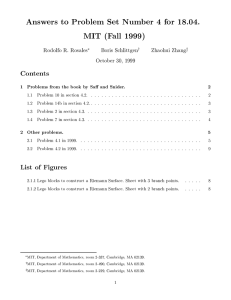Document 13555060
advertisement
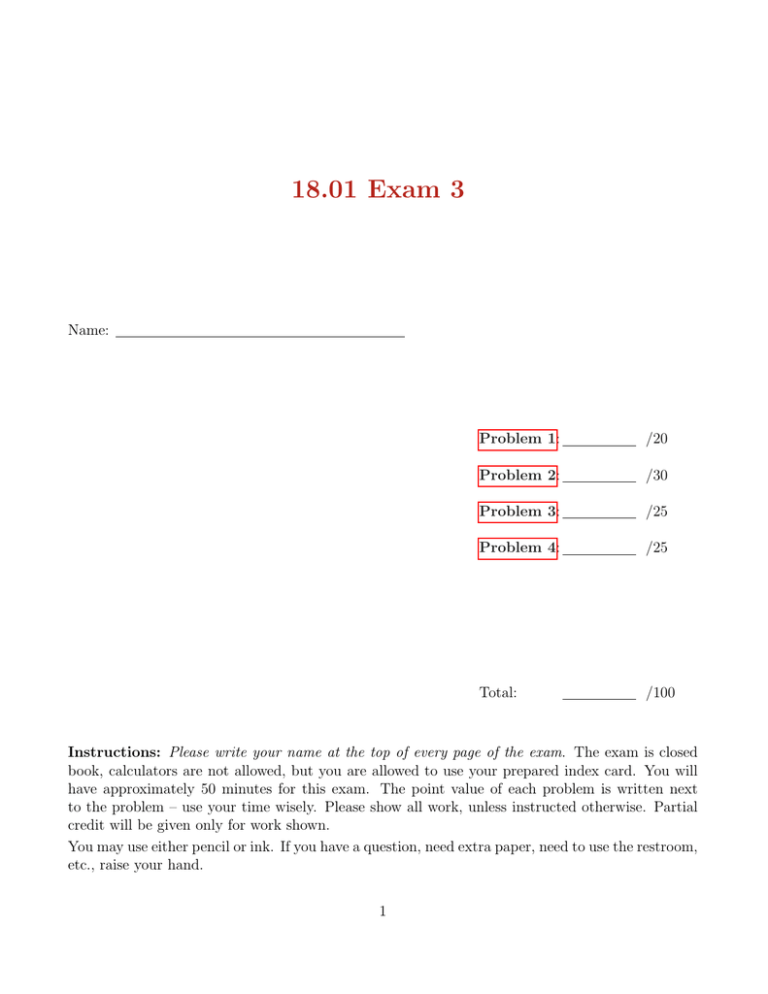
18.01 Exam 3 Name: Problem 1: /20 Problem 2: /30 Problem 3: /25 Problem 4: /25 Total: /100 Instructions: Please write your name at the top of every page of the exam. The exam is closed book, calculators are not allowed, but you are allowed to use your prepared index card. You will have approximately 50 minutes for this exam. The point value of each problem is written next to the problem – use your time wisely. Please show all work, unless instructed otherwise. Partial credit will be given only for work shown. You may use either pencil or ink. If you have a question, need extra paper, need to use the restroom, etc., raise your hand. 1 Name: Problem 1: Problem 1(20 points) A particle moves along the positive x­axis with velocity 5 units/second. How fast is the particle moving away from the point (0, 3) (which is on the y­axis) when the particle is 7 units away from (0, 3)? 2 /20 Name: Problem 2: √ Problem 2(30 points) The antiderivative of 1/ 1 + x2 is, � � � √ 1 √ dx = ln x + x2 + 1 , x > 0. 1 + x2 (a)(20 points) Break the interval [0, a] into a union of n equal subintervals. Using the right endpoint of each subinterval, compute the Riemann sum approximating the integral, � a 1 √ dx. 1 + x2 0 Leave your answer in the form of a sum. But simplify as much as possible. Show all work. 3 /30 Name: Problem 4, continued (b)(10 points) For an appropriate choice of a, express the following limit in terms of the Riemann sum from (a). Use the formula for the antiderivative to compute the limit. lim n→∞ n � k=1 √ 9n2 4 1 . + 16k 2 Name: Problem 3: Problem 3(25 points) Solve the following separable ordinary differential equation with given initial condition. � � y (x) = ex+2y , y(0) = 0. 5 /25 Name: Problem 4: Problem 4(25 points) Compute each of the following Riemann integrals. You are not required to show every step. Please do say what method you use to compute the integral. (a)(5 points) √ � 5 1 + 2x + 3x2 + 4x3 + 5x4 dx 0 (b)(5 points) � 0 10 √ x dx 1 + x2 6 /25 Name: Problem 4, continued (c)(5 points) π/2 � sin7 (θ)dθ −π/2 (d)(5 points) � 2 1 ln(t2 ) dt t (e)(5 points) � 0 π/4 sin(2t) dt. cos(t) 7
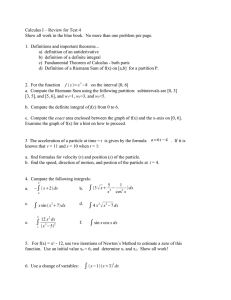
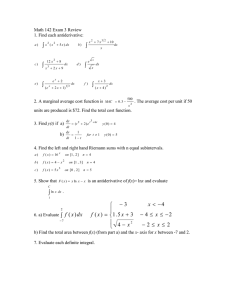
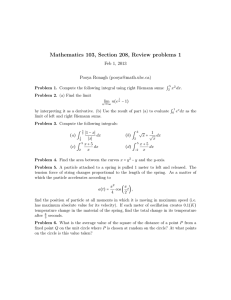
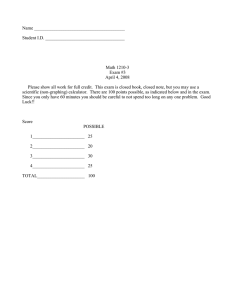
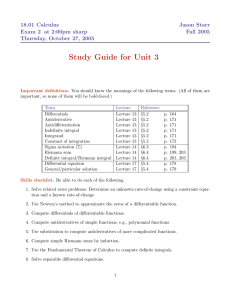
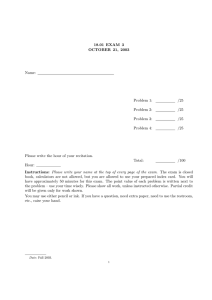
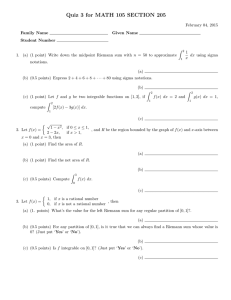

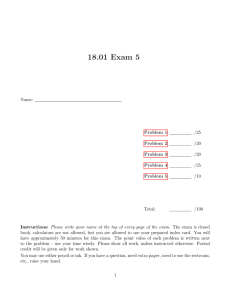
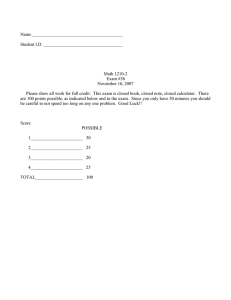
![Student number Name [SURNAME(S), Givenname(s)] MATH 101, Section 212 (CSP)](http://s2.studylib.net/store/data/011174919_1-e6b3951273085352d616063de88862be-300x300.png)
